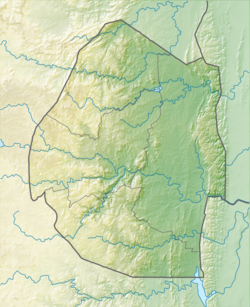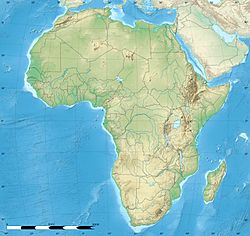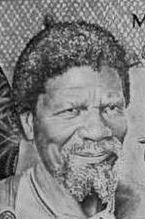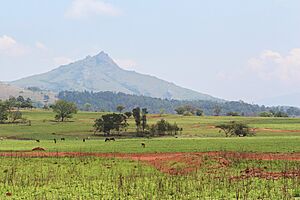Lobamba facts for kids
Quick facts for kids
Lobamba
|
|
|---|---|

Eswatini Parliament building in Lobamba
|
|
| Country | |
| District | Hhohho |
| Elevation | 694 m (2,277 ft) |
| Population
(2006)
|
|
| • Total | 9,900 |
| Time zone | UTC+02:00 (South African Standard Time) |
| • Summer (DST) | (Not Observed) |
| Area code(s) | 416 (country code +268) |
| ISO 3166 code | SZ/SWZ |
Lobamba is an important city in Eswatini, a country in Southern Africa. It is one of Eswatini's two capitals, sharing this role with Mbabane. Lobamba is special because it is the country's legislative capital, meaning it's where the Parliament meets to make laws. It's also a key traditional and spiritual center for the Swazi people.
The Ludzidzini Royal Village in Lobamba is where the Queen Mother, Ntfombi, lives. The King, Mswati III, lives about 10 kilometers (6 miles) away at the Lozitha Palace. Both the King and Queen Mother take part in important annual ceremonies here. These include the Incwala ceremony in December and January, and the Reed Dance in August and September.
Some of the main places to visit in Lobamba are the Parliament building, the National Museum of Eswatini, the Mlilwane Wildlife Sanctuary, and the King Sobhuza II Memorial Park. The Embo State Palace, which is not open to visitors, was built for King Sobhuza II. He was a very important leader who helped Eswatini gain its independence from the United Kingdom.
Contents
About Lobamba
Lobamba is located in the western part of Eswatini. It sits in a beautiful area known as the "Valley of Heaven," or Ezulwini Valley. The city is about 16 kilometers (10 miles) from Mbabane. It has a warm, wet summer and a dry winter, which is typical for a subtropical climate.
In 2006, about 11,000 people lived in Lobamba. Most of the people in Eswatini are Swazi. The official languages spoken here are Swazi and English.
History of Lobamba
There have been two places called Lobamba. The first, known as "Old Lobamba," was founded around 1750 in southern Eswatini. The Lobamba we know today was created by King Sobhuza II in the northwest part of the country.
In 1903, after the Boer Wars, the British government took control of Eswatini. King Sobhuza II became the leader of Eswatini in 1921, though the British still ruled the country. Eswatini finally became independent from the British government on September 6, 1968. This important announcement was made in Lobamba by Prince Makhosini, who became the country's first prime minister.
After gaining independence, Eswatini joined important international groups like the Organization of African Unity and the United Nations. It became a constitutional monarchy under King Sobhuza II, who lived in the royal residence in Lobamba.
City Services
Police and Safety
Lobamba has its own police station, served by The Royal Eswatini Police Service. This police force has a long history, dating back to 1907 when it was first established during the British colonial period. After Eswatini became independent, its name was changed to reflect its new status.
Schools and Learning
Education in Eswatini is free, but it is not required for all children. While literacy rates used to be low, more and more people are learning to read and write. Lobamba National High School is one of the schools located in the city.
Getting Around
Many roads in Eswatini are not paved. However, there are good paved roads connecting the main towns, including the MR3 highway and MR103 road. There are also small local airports and a railway line that connects Eswatini with Mozambique. The Matsapha Airport is about 23 kilometers (14 miles) from Lobamba.
You can find tour companies like Swazi Trails that offer trips around Lobamba. They can take you to the royal village, nature reserves, game parks, and places where local crafts are made.
Culture and Attractions
Lobamba is a great place to experience Swazi culture and visit interesting sites.
National Museum of Eswatini
The National Museum of Eswatini is in Lobamba, right next to the Parliament building. It was built in 1972 and has been expanded several times. The museum is a non-profit organization that works to preserve and share Eswatini's history and culture.
Inside the museum, you'll find a special memorial to King Sobhuza II. There are also many artifacts from the Swazi culture and from South Africa. You can see old photographs that show life in Eswatini and British colonial administrators. The museum also has a natural history section with exhibits that show the different environments in Eswatini, from high mountains to low plains. You can even see models of rarely seen nocturnal animals.
Outside the museum, there's a recreated Swazi homestead. This shows what a traditional Swazi home and village would look like.
Somhlolo Stadium
Near the Parliament building and the museum is the Somhlolo stadium. This large stadium is used for football (soccer) games and other big events in the country.
Mlilwane Wildlife Sanctuary
Just outside Lobamba, you'll find the Mlilwane Wildlife Sanctuary. This nature reserve is a fantastic place to explore the outdoors. You can go horseback riding, hiking, or even take guided mountain-bike tours. There are also rustic camps and places to camp in caves.
Throughout the park, you can spot various animals like antelope, giraffe, and zebras. It's also home to many different types of birds, making it a great spot for birdwatching.
King Sobhuza II Memorial Park
This memorial park was created to honor King Sobhuza II. He was the leader who guided Eswatini to independence in 1968. The park tells the story of the king's life through a collection of photographs. You can also see three of the king's old cars and visit his mausoleum, which is his burial place, within the park.
Malkerns Valley
The Malkerns Valley is an arts and crafts center located about 7 kilometers (4.5 miles) south of Lobamba. It's a good place to find local handmade items and learn about Swazi crafts.
Special Events
Traditional Ceremonies
Lobamba is famous for two major traditional ceremonies that happen every year. The first is the Reed Dance, which takes place in August and September. This ceremony honors the Queen Mother. The second is the Incwala ceremony, held in December and January, which honors the King. Both ceremonies involve traditional dancing, singing, and people wearing beautiful traditional clothing. These events are a vibrant display of Swazi culture and heritage.
See also
 In Spanish: Lobamba para niños
In Spanish: Lobamba para niños





